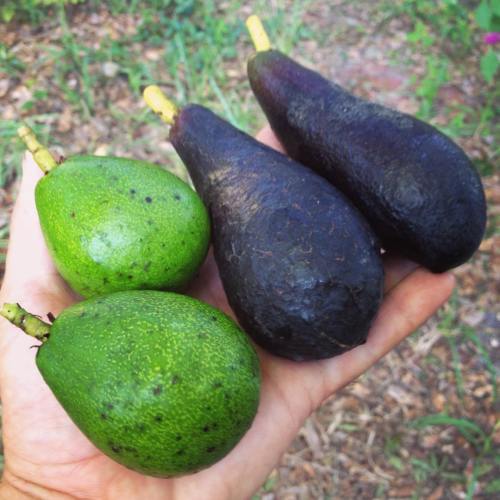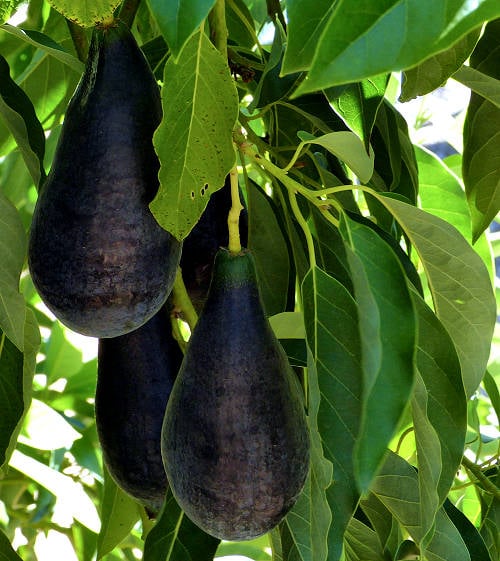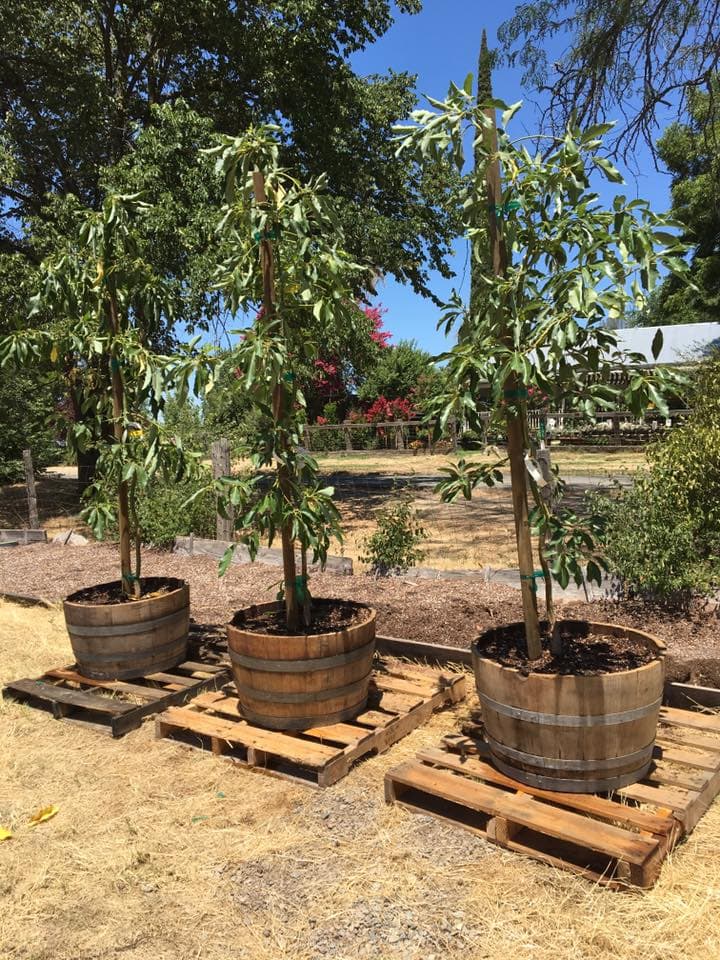Home»Garden»Fruit & Trees
Last update on August 9 , 2023
Welcome to the cosmos of avocados ! And what a tremendous wide world it is . Hass , the most common eccentric of avocado pear that you ’ll find in grocery store , is only one ofdozensof avocado pear diverseness around . To be honest , Hass is n’t of necessity the estimable one either ! It just happens to be the most marketable because it ships and store so well . Do n’t get me wrong , Hass are expectant . We originate Hass and exhaustively relish the fruit ! It is a beautiful tree diagram . Yet there are slew of other avocado varieties with alone calibre that deserve recognition too .

This article explore the attributes of 20 dissimilar awful avocado change . You will learn about each of their mature habits , tree size , cold tolerance and hardiness zona , fruit characteristics , and more . We ’ll also talk about the dispute between Type A and Type B aguacate varieties , and their important relationship in cross - pollenation .
Perhaps you ’re here because you ’re concerned in farm your own avocados ? That ’s great ! Once you read this clause and choose what avocado varieties you want to grow , check out our extensive“how to mature avocados”guide . Or , if you ’re here simply to pick up more about avocado variety – welcome ! I hope you bask the read and teach something new .
Would you like to save this?
We ’ll e-mail this post to you , so you may come back to it later !
I agree to receive email update .
Before we plunge into all of the specific avocado tree varieties , let ’s peach about them in terms of two larger groups first : character A and Type B avocados . ( or , larger groups – their slipstream , and prime type …

Type A vs Type B Avocados & Cross-Pollination
Every variety of aguacate on the list below falls into either the Type A or Type B category . For model , Hass is a Type A and Fuerte is a Type B.To encourage optimum fruit maturation , it is sound if both a case A and type B avocado Sir Herbert Beerbohm Tree are planted close by .
While idealistic , it is not absolutely necessary to have one of each case . Most aguacate varieties are considered“self - fruitful”and therefore do notneeda mate tree for crown of thorns - pollination . Even without a friend , they should develop some avocado yield . Hass and Reed are particularly honorable at providing a decent crop when grown solo . On the other hand , having that opposite Type A or Type barn partner tree around basically assure a muchlarger and more successful craw .
One bailiwick even show over a 50 % increment in yield development in Hass when provided a cross - pollinator tree ( Vrecenar - Gadus and Ellstrand , 1985 ) . Other Persea Americana smorgasbord are particularly dependent on a partner tree and perform even wretched without one , such as Pinkertons . Avocado pollenation is primarily accomplished by bees , and less so by current of air .

If you are interested in grow avocados , consider planting two unlike avocado trees in your yard . Yet if you do n’t have the space , other alligator pear trees in yourneighborhoodmay be sufficient to bring home the bacon hybridisation - pollination to your tree diagram . How close do avocado crossbreeding pollinator trees postulate to be ? Some internet source say within 25 to 30 foot . Yet others say within a few neighborhood blocks . Essentially , if avocado trees are coarse in your orbit , you should be just fine with one .
What is the difference between Type A and Type B avocados?
alligator pear have very unique flower . Rather than take separate male and female flowers like some plant , or both manly and distaff anatomy useable to interact within the same prime as others do – avocado flush essentiallychange sex ! Type A avocados flush with their female reproductive parts available first , and do so in the morning . character B alligator pear flowers also afford in the break of the day , but in their virile form . Then , each of them pull a switcheroo – and the flush open up as the opposite gender the following daytime in the good afternoon .
Because avocado flowers take turns expose their male and distaff parts , it is more unmanageable for a single tree diagram to cross-pollinate itself and thus bear yield . Again , itdoeshappen … but to a lesser extent than when an paired Type A or Type B is around , waggle their complimentary sex portion around . That is why in intimately all commercial-grade avocado pear ranches , you ’ll obtain multiple avocado form grown nearby to increase cross - pollenation . The most common partnership is Hass and Fuerte .
Interestingly enough , there are othercommonalitiesbetween the avocado varieties of each Type A or Type B mathematical group – beyond their blooming conduct ! think thefruit itself .

Several of the Type A avocados are quite Hass - like , or descendants from Hass itself . That is , they have blockheaded fast skin with plentiful and nutty flesh , eminent in oil subject matter . They ’re known to be exceptionally creamy .
In contrast , most of the Type B aguacate are considered “ greenskins ” . They ’re usually more thin - skinned , delicate , and may have slightly more watery frame withlower crude capacity . accordingly , Type B avocados are less pop among the commercial avocado industry as they damage easily in merchant marine and processing . Even more reason to acquire your own : to enjoy avocado change otherwise not promptly uncommitted ! Some multitude receive the feel and grain of Type B ’s inferior to Type A ’s . I in person bang many from each radical .
AVOCADO VARIETIES
At a Glance
All avocado mixed bag have manythings in common : They ’re evergreen perennial tree , generally do unspoiled in USDA hardiness zone 8 or 9 through 11 , and do n’t allow extreme heat or freeze temperature well . That is , with the exception of some unfearing Mexican varieties – play up below . Avocado trees savour ample temperateness and weewee , but impeccably free - draining soil and dead no standing water system .
And of course , the best commonality of all : they supply delicious , rich , creamy avocado yield ! The most trusted - fervidness way to get a prolific fruit - bearing avocado tree tree is to buy a young grafted glasshouse tree , which should bear yield within 2 to 4 years on average . On the other hand , fossa - grown Sir Herbert Beerbohm Tree can take 10 - 15 years to produce fruit and also will not “ breed lawful ” to the parent source . Note that avocadosdo not ripen on the tree . They must be harvested once ripe , and permit to finish ripening for 3 to 10 days at elbow room temperature .
Type A Avocado Varieties
Hass , Pinterton , Lamb Hass , Carmen Hass , Gwen , Reed , Mexicola Grande , Stewart , Holiday , Pryor ( aka Fantastic ) , Opal ( aka Lila )
Type B Avocado Varieties
Fuerte , Bacon , Zutano , Sir Prize , Joey , Winter Mexican , Brogdon , and Wilma aka Brazos Belle
Both Type A and Type B
There is one special variety of avocado that has both type A and type B flowers at once . TheWurtz or “ Little Cado”is also the only truedwarfavocado variety . Between its thickset sizing , superior self - fertility , and power to bear fruit sooner than most – the Little Cado is awing for backyard gardens and small spaces . See more detail below .
Most-Cold Hardy* Avocado Varieties
Joey , Bacon , Opal ( aka Lila ) , Pryor ( aka Fantastic ) , Mexicola Grande , Wilma ( Brazos Belle ) , and Brogdon . Each of these avocado varieties is described more below , include the temperature they ’re have a go at it to be tolerant of .
- Please note that avocado trees are most tolerant of the cold temperature list once they arematureand lay down , or 3 - 5 years old . untried trees will require additional protection .
Now , have ’s go over each of these in point !

11 “TYPE A” AVOCADO VARIETES
Hass
Pinkerton
Reed
Lamb Hass
Carmen Hass
Gwen
Mexicola Grande
Stewart (Stuart)
Holiday
Pryor/Del Rio (sometimes called Fantastic)
Opal aka Lila
8 “TYPE B” AVOCADO VARIETIES
Fuerte
Bacon
Sir Prize
Zutano
Winter Mexican
Brodgon
Joey
Wilma aka Brazos Belle
Both Type A & B Flowers
Wurtz aka “ Little Cado”
And that concludes this exploration of 20 awesome avocado varieties.
Uhm , who else is hungry now ? I sure am . Good thing we have a good homegrown alligator pear waiting in the electric refrigerator ! Are you growing any of the avocados we talked about today ? Which I ? Or , did I leave a must - grow type off the listing ? It was by all odds hard to narrow it down , since there are dozens more speciality avocado varieties than I could possibly play up here .
Finally , if you subsist inzones 8 - 11 , I ’m thinking you ’ll grok these other articles too :
We are not personally intimate with all of these avocado varieties . Therefore , I compile selective information and photo from a number of expert sources to write this clause , includingGreg Alder , Rainbow Gardens , A Natural Farm , Backbone Valley Nursery , Florida Fruit Geek , Yamagami ’s Nursery , Four Winds Nurseryand theUniversity of California . A self-aggrandising give thanks you to them all !











